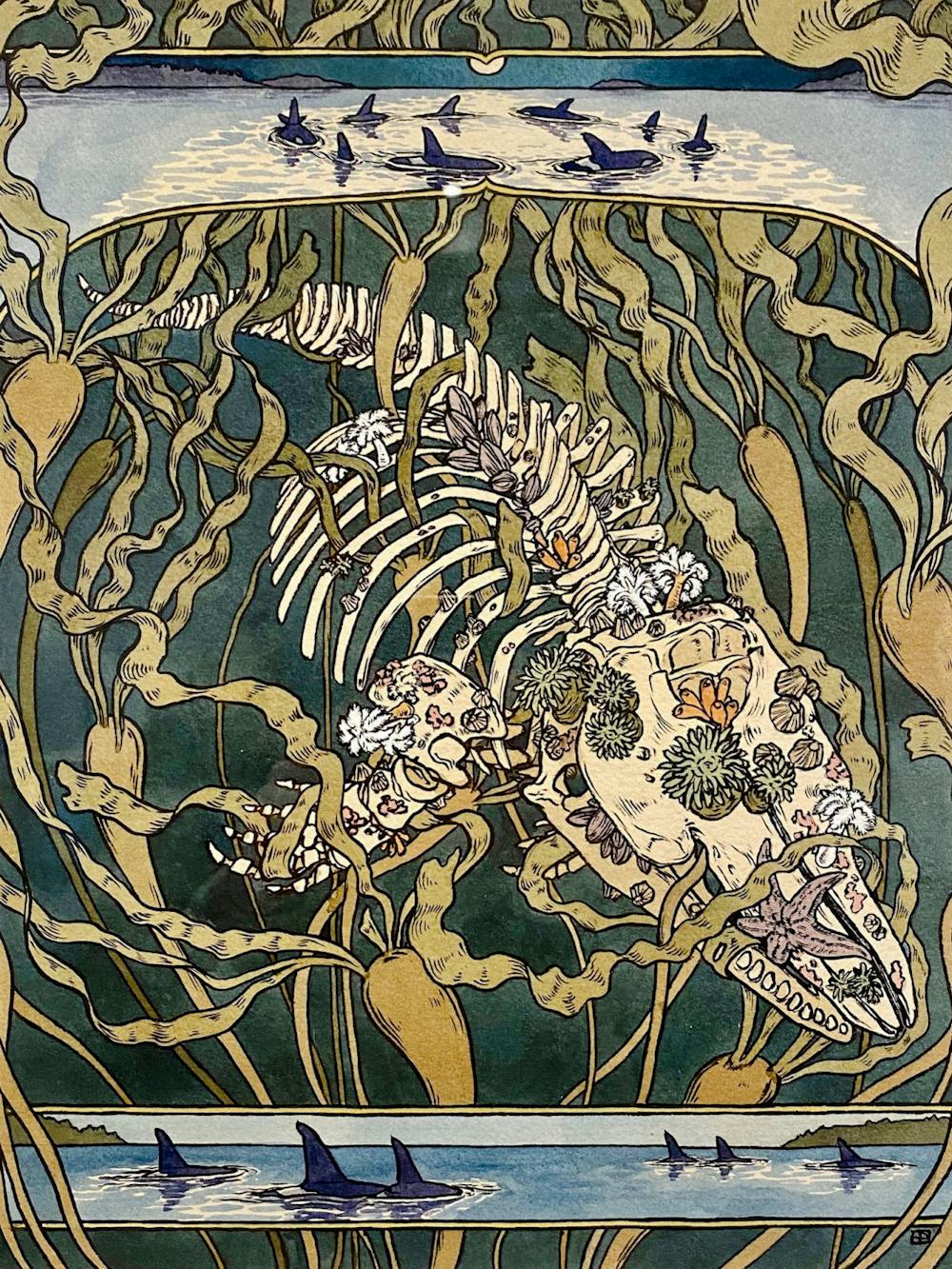Last week, a reception at the Granoff Center for the Creative Arts celebrated the exhibition “Re-Examining Conservation: Questions about the Arts and Sciences,” the first show in a biennial series hosted by the nonprofit Creature Conserve. The exhibition opened April 4 and will remain on view until June 10.
The exhibit was a “fortuitous opportunity for Creature Conserve and the Brown Arts Institute,” said Thalia Field, faculty director of the Brown Arts Institute.
“Re-Examining Conservation” highlights creative work “combining art, science and traditional ecological knowledge to study, celebrate and protect animals and their habitats,” according to the exhibit website.
Creature Conserve is an outreach organization promoting animal conservation through collaboration between scientists and artists. The organization was founded on the understanding that conservation is a collective obligation and not the responsibility of individual conservationists, said Lucy Spelman ’85, the founder and executive director of Creature Conserve and senior lecturer at the Rhode Island School of Design.
Creature Conserve breaks down traditional barriers to conservation by providing scholarship, exhibition and workshop opportunities to artists, poets and other creatives, Spelman said.
Field said Creature Conserve’s interdisciplinary approach reflects a Brown education that questions pressing issues from a “much wider view.”
“I think that it’s really vital that the arts participate in urgent conversations that impact our world, and art can be part of any conversation because art is inherently interdisciplinary,” Field said.
Spelman likewise expressed the need for multidisciplinary solutions to complex problems. “Artists and designers were really great at tackling these complexities,” Spelman said regarding her ongoing experience teaching RISD students. “With ‘Re-Examining Conservation,’ we really wanted to open up a conversation and hear from artists.”
In the exhibit, artists are asked, “what is conservation and what does it look like?” exhibition curator Heather McMordie said. The show includes artwork from Brown students and Rhode Island-based artists.
“Working with Indigenous Rhode Islanders was at the top of the list because we’re on their homelands,” Spelman said.
Creature Conserve Curatorial Scholars Haley Johnson, a member of the Mashpee Wampanoag tribe, and Lynsea Montanari, a member of the Narragansett tribe, contributed to the curation of the exhibit. Johnson and Montanari are part of the Tomaquag Museum’s Indigenous Empowerment Network, a group of community partners that aims to eliminate poverty in Rhode Island’s Indigenous community.
McMordie said artists represented in the exhibit build on traditional ecological knowledge in diverse ways, referencing Johnson’s ceramic piece “Holding Tank,” which she said portrays storytelling as a means of passing on knowledge about conservation.
McMordie also expressed the importance of bringing together artists from across the globe to improve local conservation efforts. She mentioned collaborative pieces of illustration and poems created by Pacific Northwest-based artist Jeanne Dodds and India-based artist Deepika Nandan, who “have been in conversation about human-animal conflict in their local areas,” she said.
Spelman emphasized that people should become more comfortable with the complexity of conservation because artists and scientists across the globe have different understandings of what conservation entails.
John Walker, a RISD alum who attended the exhibit, said that art can play an important role in effecting change because it elicits an “emotional response” from a broad audience.
Kathy Hodge, a local artist featured in the exhibit, discussed the growing popularity of collaboration between scientists and artists. Hodge’s painting “African Dog” investigates the abnormality of animals living in human-inhabited environments.
“Conservation doesn’t have to be 100% of your time,” Spelman said. Reflecting on what she hopes visitors take away from the exhibit, Spelman expressed the hope that it could encourage individuals to reconsider conservation from different standpoints.
The exhibit also featured a multi-day symposium April 21 to 23 that explored issues within the conservation of animals and their habitats. The symposium centered the work and writing of many speakers and scholars, not just visual artists, Field said.
It was “an opportunity for people who work in other media, such as performance and writing” to share their perspectives, she added.
Conversations surrounding conservation have been around for years, but “things haven’t changed” in the ways conservationists initially hoped, McMordie said. When asked about the title “Re-Examining Conservation,” McMordie said it reflects the fact that conservation is “an ongoing process.”
Spelman added that the success of Creature Conserve is measured “in the numbers of people who come to our workshops, the numbers of people who participate in mentorship and the interest in our exhibits.”





